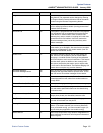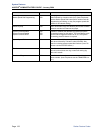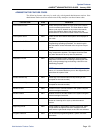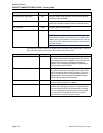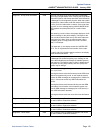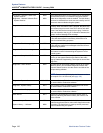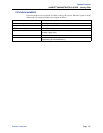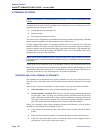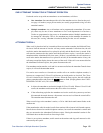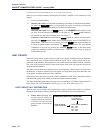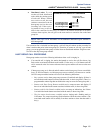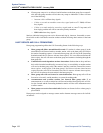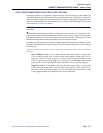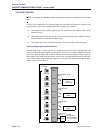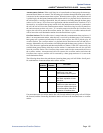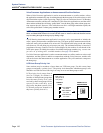
Page 129
System Features
AXXESS
®
ADMINISTRATOR’S GUIDE – January 2004
One-Attendant or Multiple-Attendant Operation
ONE-ATTENDANT OR MULTIPLE-ATTENDANT OPERATION
Each node can be set up with one attendant or several attendants, as follows:
• One Attendant: One attendant provides all of the attendant services listed on the previ-
ous page. All trunks (except private trunks) are usually programmed to ring in at this
attendant’s station.
• Multiple Attendants: Any or all stations can be programmed as attendants. (For exam-
ple, there may be one or more attendants to serve each department in a business.)
Trunks are programmed to ring at any or all attendant stations. Multiple attendants can
be arranged in a hierarchy. That is, one attendant may be the attendant for another. In
this case, the “serving” attendant is reached by dialing 0 at the “served” attendant.
ATTENDANT RECALL
When a call is placed on hold or is transferred from one station to another, the Hold and Trans-
fer timers limit the amount of time the call may remain unattended. After that time, the call
recalls the station that transferred it or placed it on hold, and the Recall timer is started. If the
call remains unanswered at the station until the Recall timer expires, it recalls the station’s
attendant and the Abandoned Call timer starts. (If there is no attendant, the call continues to
recall at the station that transferred it or placed it on hold.) If the attendant station is busy, the
call camps on and the display shows the source of the recall. If the call is not answered before
the Abandoned Call timer expires, the system disconnects the call.
If an attendant station transfers a call and it is not answered before the Attendant Transfer timer
expires, it will recall the attendant station.
If a station user transfers or forwards an outside call to an outside telephone number, it
becomes an “unsupervised” CO-to-CO call because no inside parties are involved. The CO-to-
CO call is limited by the Unsupervised CO timer. When the timer expires, the call recalls the
primary attendant station and causes the button to flash. (Display phones show UNSU-
PERVISED CNF RECALL.) This serves two purposes:
• It allows the attendant to monitor the length of CO-to-CO calls. When a CO-to-CO call
recalls, the attendant can disconnect the call or allow it to continue.
• If the callers hang up before the attendant receives the recall, the system may not have
disconnected the trunks because a disconnect was not received from the central office.
The attendant must disconnect the call.
When a recall rings at the attendant’s station, a Call or individual trunk button flashes at the
medium rate.
If the attendant has calls forwarded, recalls from stations follow internal call forward requests.
Recalls do not forward to outside telephone numbers, but recall the attendant’s station until
they are answered or the Abandoned Call timer expires. Placing the attendant’s station in Do-
Not-Disturb does not block recalls or direct ring-in calls.
If there is not a primary attendant, recalls remain at the stations and ring until answered or dis-
connected by the system.
CNF



